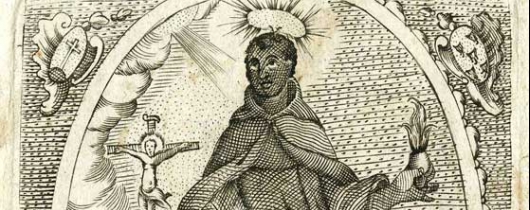Saints: People of a Time for All Time

On April 3, Franciscans celebrate the memory of St. Benedict the African, also known as St. Benedict the Moor or St. Benedict the Black. He was born near Messina, Italy in 1526. His parents were slaves brought (today we would say trafficked) to Italy from Africa and converted to Christianity. He grew up a slave but was freed at age 18.
Even at a young age, Benedict was known for his piety, generosity and humble service to those who were poor. He eventually joined an independent group of hermits, and when their founder died he was chosen their leader. When Pope Pius IV disbanded such groups, Benedict was received in the Order of Friars Minor. His sanctity, wisdom and gifts of leadership continued to grow, and although he was illiterate and a lay brother, he soon became Guardian of St. Mary Friary in Palermo. He was greatly sought after for his charity, counsel and spiritual guidance, much like Bl. Solanus Casey would be in another part of the world centuries later.
Today’s Office of Readings in the Franciscan Supplement to the Liturgy of the Hours provides a beautiful reflection on the power of saints to inspire us:
The life of every saint presents a challenge and often to others encouragement to holiness. The time, place and circumstances of life are peculiar to each saint, and they vary with each one. It is the use of divine grace and conformity to the divine will which consecrate the circumstances and sanctify the person using them. Use of grace and conformity to God’s will constitute the challenge and the power of example that give courage to all Christians to apply the same means to achieve the same basic goal, each in his own way, in his own time, and in his own situation (64).
St. Benedict the Moor Parish in Milwaukee was established early in the last century as “the colored mission” at a time when both racism and a proliferation of ethnic or national parishes were common in the urban centers in the East and Midwest of the USA. In the half century that followed, it was the “mother church” for Black Catholics in Milwaukee. Its ministries included an elementary school, a high school and eventually St. Anthony Hospital.
By 1970 the growth of the African-American community, urban renewal, open housing and other factors led many people to move away from the parish and it was in danger of closing. The school and hospital eventually closed. But the parish survived. It reinvented itself as a “wildlife refuge” for people who were on the margins of Church and society and placed an even greater focus on the corporal as well as spiritual works of mercy.
The St. Ben’s Community Meal was started to address the needs of those who were homeless and/or food insecure. The Benedict Center for Justice was started to address the inequities in our criminal justice system. St. Anthony Hospital became for many years a work release center for Milwaukee County. The Milwaukee County Jail across the street from the parish grew, and the Milwaukee Secure Detention Facility was built where the St. Benedict the Moor School once stood.
A lot changed.
It continues to change. The area immediately north of the parish—what used to be the Pabst Brewery—is rapidly gentrifying, a sign of economic expansion in Downtown Milwaukee. A couple of weeks ago, St. Anthony Apartments opened in what was formerly the hospital and then a correctional center. The apartments especially serve people who have suffered from chronic homelessness, and Capuchin Community Services (encompassing the St. Ben’s Community Meal and the House of Peace) has offices and expanded services there. Meals continue to be served six nights a week, and a small but dedicated parish community continues to worship and grow together.
Times and circumstances change. Missions evolve. Even names and references can change. But the inspiring examples and intercessory power of our saints remains the same. St. Benedict the African, pray for us!




